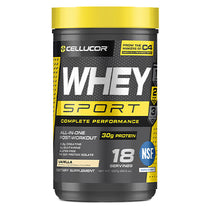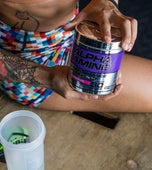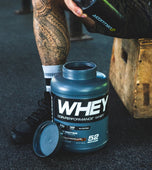 Flexibility is a key area of fitness. Being flexible can improve your performance in all types of exercise, and the American College of Sports Medicine recommends stretching every day to improve your flexibility.
Flexibility is a key area of fitness. Being flexible can improve your performance in all types of exercise, and the American College of Sports Medicine recommends stretching every day to improve your flexibility.
The benefits of flexibility are numerous: less back pain, increased range of motion, injury prevention, improved circulation, less stress, and better posture.
Understanding your limitations can help you push past them to improve your flexibility and, ultimately, your performance.
Here are just four ways you can self-test your flexibility.
Sit-and-reach Test
How it works
This simple assessment is recommended by the Mayo Clinic as a way to measure the flexibility of the back of your legs, hips and lower back. You’ll need some sticky tape and a measuring stick.
How to do it
Place the yardstick vertically on the floor and at the 15in mark, place a long strip of tape perpendicular across it. Sit on the floor so the heels of your feet just touch the tape. Slowly reach forwards as far as you can and hold the position for at least one second. Repeat this two more times and record the distance of the three reaches. You may well not be able to reach past your feet, in which case, it counts as a negative score.
What your results mean
According to the Mayo Clinic, for a good level of flexibility men aged 25 should be able to reach to 19.5 inches and women should hit 21.5 inches. Men aged 35 should reach 18.5 inches and women 20.5 inches. At the age of 45, men should aim to reach 17.5 inches and women 20 inches.
How to improve
Make sure you warm up beforehand, as it will make your stretching session much more effective. If you have trouble getting your legs straight, persuade a friend to hold your knees down. To significantly improve your flexibility, do hamstring and glutes stretches one to two times a day.
Overhead Wall-Facing Squat
How it works
Flexibility is also about being able to hold a range of poses, and this test illustrates your ability to hold a squat as you stand right in front of a wall – which is much harder than it sounds.
How to do it
Stand to face a wall with your toes two inches away from it. Raise your arms above your head and pop a squat. The key here is to not touch the wall with your hands as you sink and hold the pose.
What your results mean
If you can do this test without touching the wall (or falling over) then you have a good level of flexibility.
How to improve
If you struggled with this test, it's worth going back a step and focusing on the mechanics of your movement–concentrate on your motion and posture. Additionally, try to incorporate Cossack squats five days a week (to build strength and mobility) and daily light yoga into your routine to help loosen up your muscles.
Shoulder flexibility test
How it works
Just as the name suggests, this test assesses the flexibility of the shoulder joint, which is particularly crucial for injury prevention. You need either a long stick or a towel and a tape measure.
How to do it
Hold the towel or stick in front of you, hands wide apart and palms facing down. Lift the object over and behind your head, while maintaining your handgrip. Repeat the movement, moving your hands closer together each time until you can no longer complete the motion. Measure the minimum distance between your hands
What your results mean
There is no numerical scoring for this test, but you should be aiming to have your hands as close together as possible by the end.
How to improve
If you’re lacking shoulder flexibility, try focusing in on your back muscles when you train. You should also try some shoulder flexibility exercises several times a week. Give 5-10 minutes of daily foam rolling a go, too.
Internal/External Rotation test
How it works
This tests the rotation in your shoulders and requires no equipment whatsoever.
How to do it
Kneel down on the floor and sit on your shins. Pull your right elbow as far behind the back of the head as possible. Extend your left arm, tuck it behind your back and try to touch the fingers of your right hand with your left across your shoulder blades. Repeat this again on the other side. You should ideally be able to grab hold of your fingertips, but if not, it can help to use a strap or band for the lower hand to take hold of as you reach around.
What your results mean
The more flexible you are the more contact you’ll be able to make between your hands. As you do this exercise, try to ask yourself where you feel this stretch the most, whether there’s any pain and if there’s a difference in performance when you swap sides.
How to improve
You’ll need to start working out your triceps and lats. Foam roll those areas two to three times a week, and always make sure you stretch these areas before and after your workout.
Hydrate while you Stretch
The harder you push yourself during your workout the more you sweat. But sweat isn’t just a measure of your effort during training—it’s also sign that you need to rehydrate. Make sure you stay hydrated by sipping on BCAA Sport.











